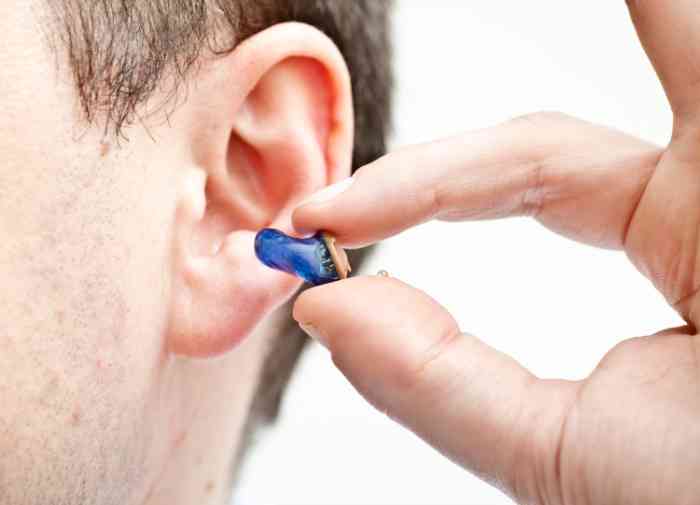Hearing aids are intricate devices designed to improve auditory experiences for those with hearing loss. In Australia, where hearing health is a critical aspect of well-being, understanding the various hearing aid parts is essential for choosing the right device and maintaining its effectiveness. This article delves into the components of hearing aids, their functions, and answers frequently asked questions about hearing aid parts and accessories.
Internal parts of a hearing aid: essential components
Hearing aid microphone
Amplifier
Speaker (Receiver)
Batteries


External parts of a hearing aid
Body cover or casing
Button or switch
Wire
How do hearing aids work?
Hearing aids work by amplifying sound to improve hearing. They consist of a microphone that picks up sound waves, a processor that converts these waves into electrical signals, and a speaker that amplifies and transmits the sound into the ear. Modern hearing aids also feature advanced technology to filter background noise, enhance speech clarity, and adjust to different listening environments. By converting external sounds into clearer and more manageable audio, hearing aids help individuals with hearing loss experience a richer, more connected auditory world.
Common hearing aid spare parts and accessories
Earmolds
Wax guards and hearing aid filters
Domes
Sound tubes
Telecoil (T-Coil)
Volume control and program buttons
Advanced features and technologies
Noise reduction and feedback cancellatio
Noise reduction and feedback cancellation are advanced features that enhance sound clarity. Noise reduction technology minimizes background noise, making it easier for users to focus on speech. Feedback cancellation prevents the annoying whistling sound that can occur when amplified sound is picked up by the microphone. These features are crucial for providing a comfortable and clear listening experience, especially in noisy environments.
Directional microphones
Directional microphones improve hearing in specific directions, allowing users to focus on sounds coming from a particular source. Adaptive directionality adjusts the microphone's focus based on the environment, enhancing the user's ability to hear in various settings. This technology is particularly beneficial in situations where multiple sounds are present, such as in a crowded room or at a social gathering.
Connectivity features
Modern hearing aids often come with connectivity features such as Bluetooth and wireless streaming. These technologies allow users to connect their hearing aids to smartphones, tablets, and other devices, enabling them to stream audio directly to their hearing aids. Compatibility with various devices enhances the functionality of hearing aids, providing users with a seamless and integrated listening experience.
Artificial intelligence and machine lear
Artificial intelligence (AI) and machine learning are revolutionizing the hearing aid industry by providing personalized hearing experiences. AI can adapt to the user's preferences and make real-time adjustments based on the listening environment. Examples of AI integration include automatic volume adjustments, noise reduction, and speech enhancement. These technologies offer a more intuitive and customized hearing experience, improving user satisfaction and comfort.
How do hearing aids work?
Hearing aids operate through a three-part mechanism:
- Sound Capture: The microphone picks up environmental sounds.
- Signal Amplification: The amplifier increases the signal strength.
- Sound Delivery: The speaker converts the amplified signal back into sound, delivering it to the ear.
This process allows users to experience enhanced auditory environments, tailored to their specific hearing needs.
With you on your journey to better hearing.
It's time to finally treat your hearing loss. Sign up for a free consultation with a licensed hearing care professional today to determine if you have hearing loss. It’s the start of your journey towards better hearing.
EarPros benefits:
- it's 100% risk free.
- best partner with more than 1.000 stores
Thank you for submitting your request
We will get in touch with you as soon as possible.Types of hearing aids


When choosing a hearing aid, it's important to understand the different styles available and how they fit into your ear. Below is an overview of the most common types of hearing aids and their key features:
- Behind-the-Ear (BTE): Positioned behind the ear with a tube directing sound into the ear canal. This type is versatile and suitable for various levels of hearing loss.
- In-the-Ear (ITE): Fits snugly inside the ear, covering a larger portion of the outer ear. ITE aids are suitable for a variety of hearing losses and offer more space for controls.
- Receiver-in-Canal (RIC): A compact version of BTEs, with the receiver placed directly in the ear canal.
- In-the-Canal (ITC): Custom-molded to fit partially within the ear canal. ITC aids are less visible than BTEs and are suitable for mild to moderate hearing loss, with controls that may be slightly more challenging to manipulate.
- Completely-in-Canal (CIC): Designed to fit entirely within the ear canal, making them nearly invisible. CIC aids are ideal for those seeking discreet hearing solutions, but their small size may limit battery life and feature options.
Parts of a BTE Hearing Aid
Parts of an ITE Hearing Aid
Parts of a RIC Hearing Aid
Parts of an ITC Hearing Aid
Parts of a CIC Hearing Aid
Which hearing aid is right for me?
Choosing the right hearing aid depends on your hearing loss level, lifestyle, and preferences. Behind-the-Ear (BTE) aids are powerful and versatile, ideal for severe loss. In-the-Ear (ITE) aids offer a balance of visibility and function for various hearing losses. Receiver-in-Canal (RIC) aids are discreet and high-performing, suitable for mild to moderate loss. In-the-Canal (ITC) aids are less visible and provide moderate control, while Completely-in-Canal (CIC) aids are the most discreet but may lack extensive features. An audiologist can help you choose the best option for your needs.




